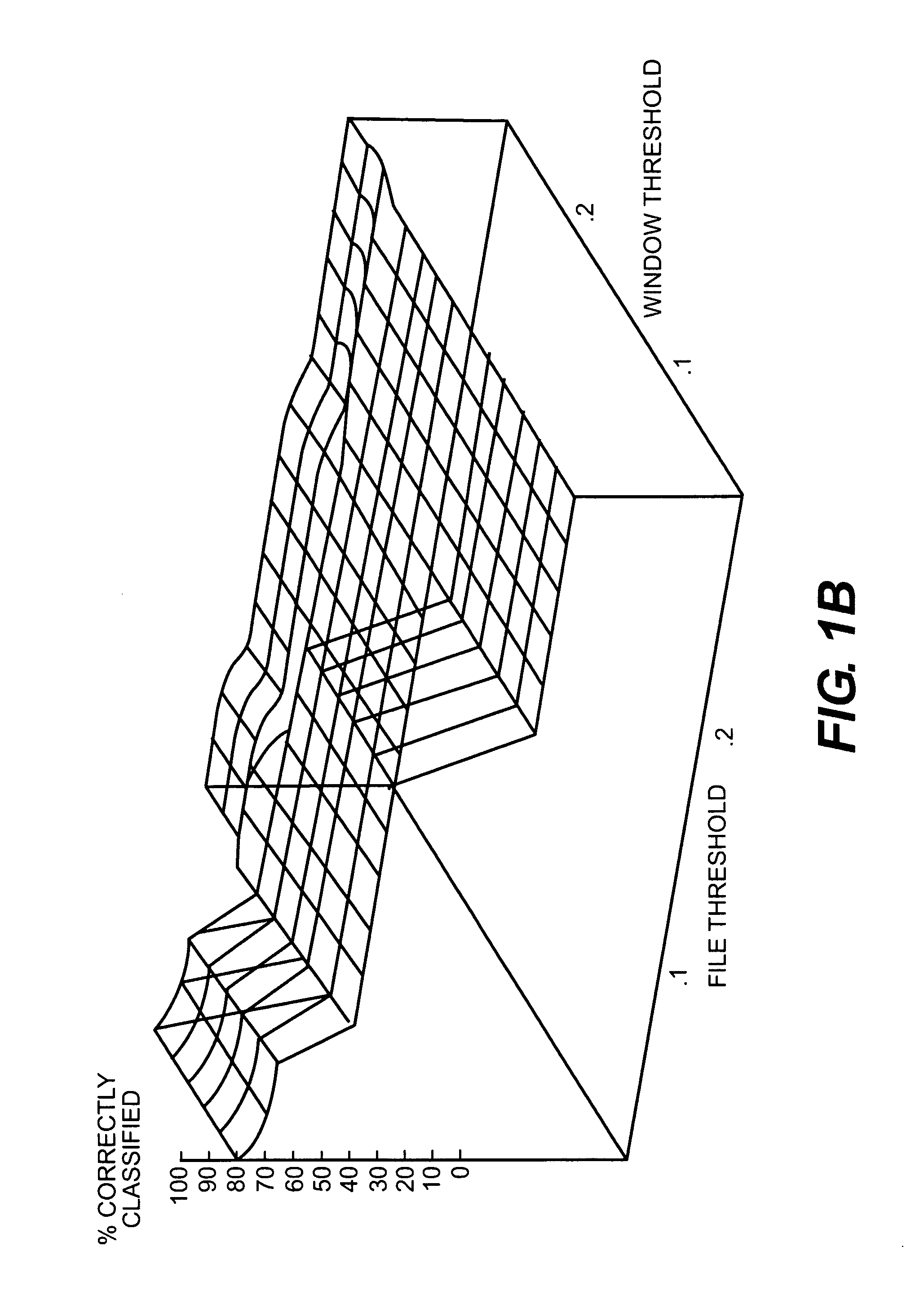Computer intrusion detection system and method based on application monitoring
a detection system and application monitoring technology, applied in the field of intrusion detection systems based on application monitoring, can solve the problems of high false positive rate, high probability of attack, user's behavior may slowly change, etc., and achieve the effect of reducing the false positive rate and false negative ra
- Summary
- Abstract
- Description
- Claims
- Application Information
AI Technical Summary
Benefits of technology
Problems solved by technology
Method used
Image
Examples
Embodiment Construction
[0029]As discussed above, the present invention comprises three aspects. In a first aspect, anomaly detection is implemented using a string-matching algorithm which can be tuned to reduce the rate of false-positive identifications. In the second aspect, the present invention uses a neural network to provide both misuse and anomaly detection systems. In a third aspect, a time series prediction system is implemented to detect anomalous behavior in an application.
[0030]A. IDS Using String-Matching Algorithm in Combination with Temporal Locality Algorithm
[0031]This aspect of the present invention comprises an IDS using a string-matching algorithm in combination with a temporal locality algorithm. In the preferred embodiment, this aspect of the present invention comprises a data collection and pre-processing phase and a monitoring phase, as described below.
[0032]Data Collection and Pre-Processing Phase
[0033]As discussed above, operating systems typically comprise auditing facilities whic...
PUM
 Login to View More
Login to View More Abstract
Description
Claims
Application Information
 Login to View More
Login to View More - R&D
- Intellectual Property
- Life Sciences
- Materials
- Tech Scout
- Unparalleled Data Quality
- Higher Quality Content
- 60% Fewer Hallucinations
Browse by: Latest US Patents, China's latest patents, Technical Efficacy Thesaurus, Application Domain, Technology Topic, Popular Technical Reports.
© 2025 PatSnap. All rights reserved.Legal|Privacy policy|Modern Slavery Act Transparency Statement|Sitemap|About US| Contact US: help@patsnap.com



